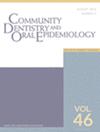Despite being almost entirely preventable, globally, dental caries is extremely prevalent. Moreover, dental caries will continue to present an even larger challenge for lower income countries, particularly those in the African context, as they transition to a more Western diet. Hence, epidemiological data providing insight into disease patterns and trends is critical to inform public health action. The purpose of this study was to examine dental caries clusters by caries detection threshold among 15-year-old adolescents in Sierra Leone, using data from the latest national survey, and to explore associated sociodemographic factors.
This paper presents a secondary analysis of oral health data on 490 15-year-olds from the Sierra Leone national oral health survey of schoolchildren. Hierarchical cluster analysis of dental caries experience was conducted across all surfaces at four decay detection thresholds using the International Caries Detection and Assessment System (ICDAS) (clinical: ICDAS 2–6, cavitated: ICDAS 3–6, obvious: ICDAS 4–6 and extensive obvious: ICDAS 5–6 decay) across the four regions of Sierra Leone. Ordered logistic regression was used to estimate the association of sociodemographic factors with generated clusters relating to clinical and obvious decay experience. These are of both clinical and epidemiological relevance.
A 3-cluster decay pattern representing a ‘low’ to ‘high’ decay experience distribution was observed under each decay detection threshold across surfaces. For clinical decay (including visual enamel caries), 28.8% had low, 55.1% medium and 15.9% high caries status. In the adjusted model, the only significant risk factor across obvious and clinical decay thresholds was region, with adolescents outside the Western region more likely to experience decay.
This study suggests that adolescents in Sierra Leone fall into three distinct caries clusters: low, medium to high decay experience distribution, regardless of decay threshold. It reinforces the importance of recognizing dental caries detection thresholds and the use of contemporary epidemiological methodology. This suggests that adolescents outside the Western region are likely to have higher caries experience. The data also provides insight to the nature of adolescents in each cluster and should help to inform policy and planning of the integration of oral health into primary care and school systems.



